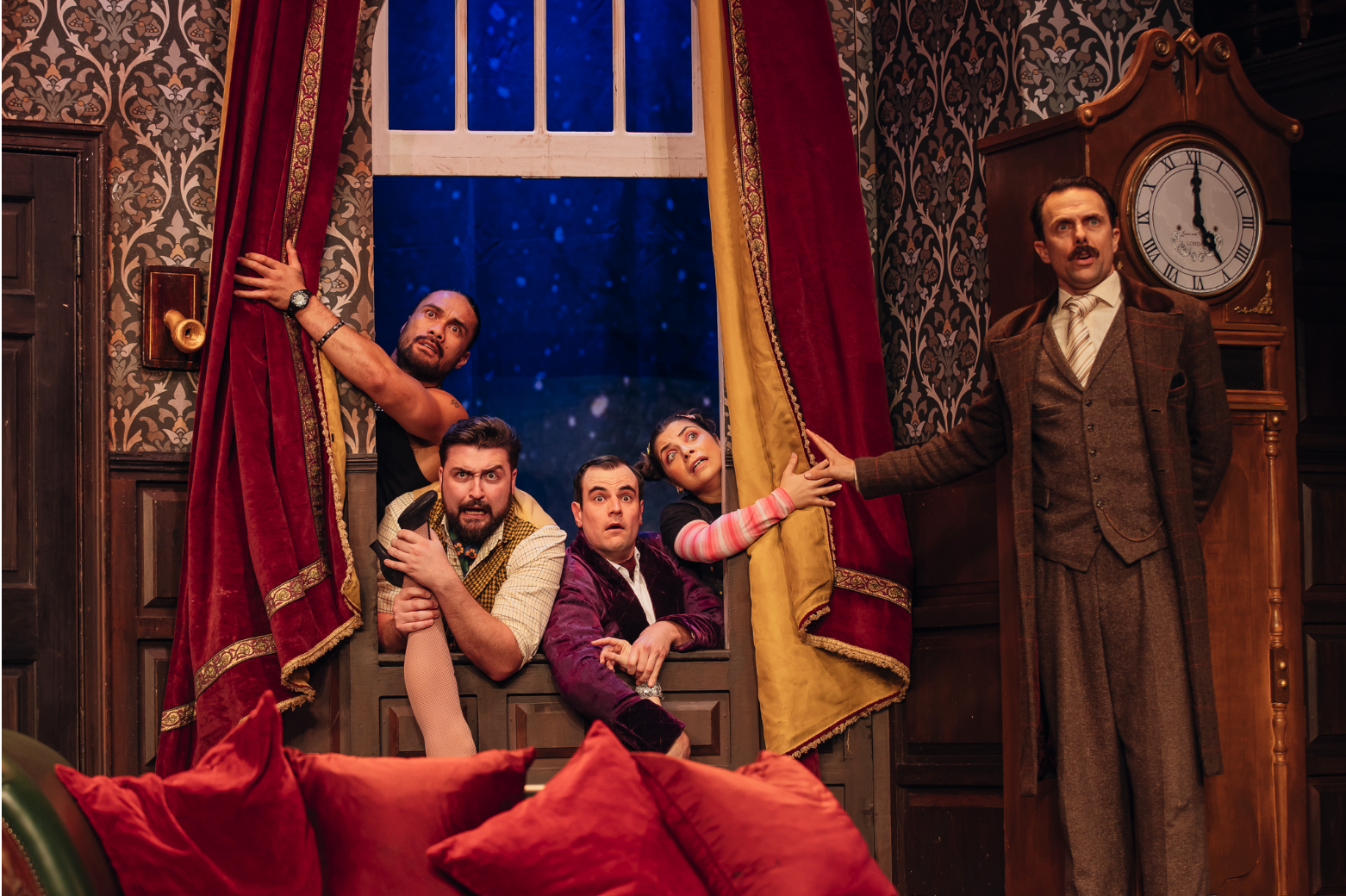The Play That Goes Wrong is a very, very fun night out.
Playfully cliche and chaotically comedic, it is a perfect introduction for audiences who aren‘t typically play-goers.
The play’s premise revolves around a stereotypical 1920s murder mystery. The twist? The play is produced by a cast and crew who accidentally unleash a constant stream of theatrical mayhem. Regardless, they do absolutely whatever it takes as, after all, ‘the show must go on’. The Play That Goes Wrong takes Murphy’s Law to the extreme, with controlled chaos incited at every chance.
When “anything that can go wrong, will go wrong” is the main theme, it could easily lean very cliche and predictable, and at times, it does veer that way. However, the play has done an excellent job with balancing formulaic tropes and their expected laughs, while still providing fresh comedic moments that have the audience in extended stitches. Whether it is technical glitches, dramatic set malfunctions, forgotten lines or everything in between, the show carefully crafts a plethora of impeccably timed hilarious moments. The ongoing whodunnit storyline keeps the audience engaged, enabling the play to continually build on running jokes while introducing novel elements and punchlines.
One of the show’s strengths lies in its ensemble. Each performer plays two roles simultaneously – a stereotypical over-the-top character in the murder mystery, and also the underlying thespian playing that role. Particular highlights were the Inspector (Jonathan Martin) who breaks the fourth wall, ensuring a constant stream of laughter from the entire theatre and Sebastiano Pitruzzello’s portrayal of Max who repeatedly and mischievously breaks character each time they are on stage. This running motif was extremely well-executed and did not feel repetitive – in fact, the audience anticipates these moments and they always prove to incite laughter. Olivia Charalambous also shines as a stagehand forced to be a reluctant stand-in for the main actress but then proves to love the limelight herself. Her performance was consistently hilarious through her expressive and exaggerated physical comedy.
The set (original set design by Nigel Hook) is an outstanding character of its own. It is expertly executed and utilised, continually leaving the audience in awe, terror and stitches simultaneously. This show deftly uses its very talented ensemble and superb set to execute many different types of comedy, developing a skilfully layered performance.
Despite the many strengths, the play has a weakness that leaves a less satisfying impression. The female representation is disappointingly one-dimensional, particularly evident in comparison to the scripting of the male characters. The two women are literally interchangeable and then subsequently reduced to a jealousy-fuelled conflict at the climax of the play. This dynamic felt uninspired and was easily the most predictable arc of the play. Although the play generally thrives on tropes for funny moments, this felt like a missed opportunity for more nuanced and novel comedy. At times, the pacing also suffers as elements drag out – while they were initially comical due to the absurdity, they ended up tiring and too familiar. Similarly, some of the cringe-inducing humour may not be as enjoyable for all audience members. However, The Play That Goes Wrong quickly and often rebounds from the lulls and continues to delight.
The Play That Goes Wrong quickly establishes itself as delightful theatrical mayhem. The nonstop absurdity and hilarity make this an extremely accessible introduction to theatre. Plays can often appear quite daunting and pretentious – this show is definitely not either of those. It has a clever concept with a steady plot, an excellent ensemble and outstanding set. It succeeds in creating fans in wider audiences, while also giving those familiar with theatre conventions plenty of inside jokes. The Play That Goes Wrong is not just a play, it is ultimately a tribute and toast to the passion and perseverance it takes to stage live theatre.
